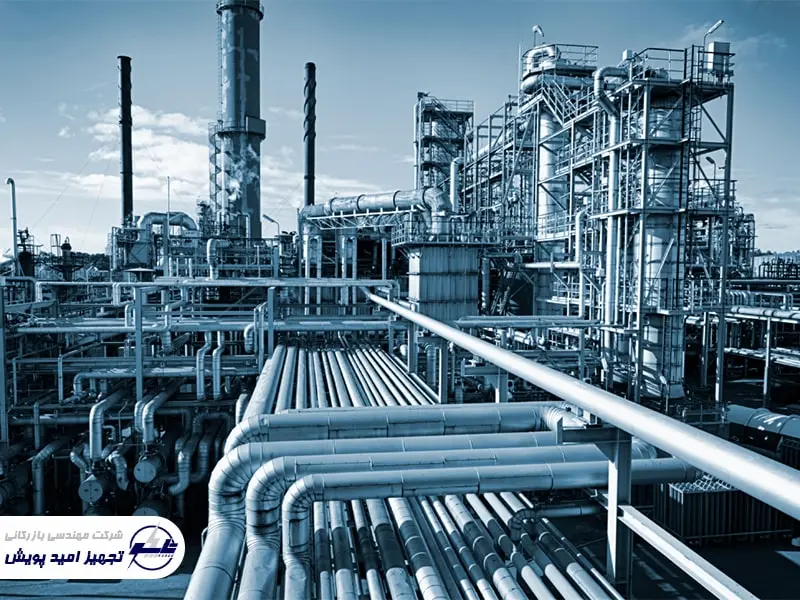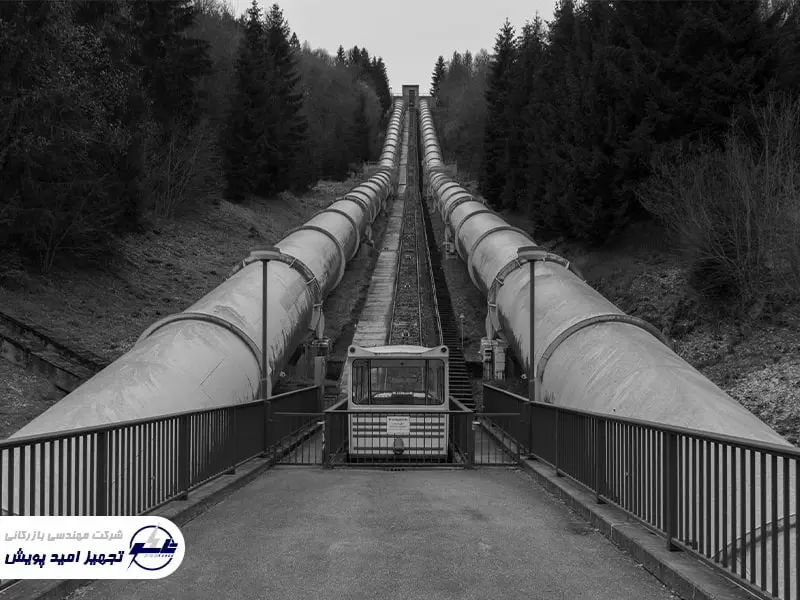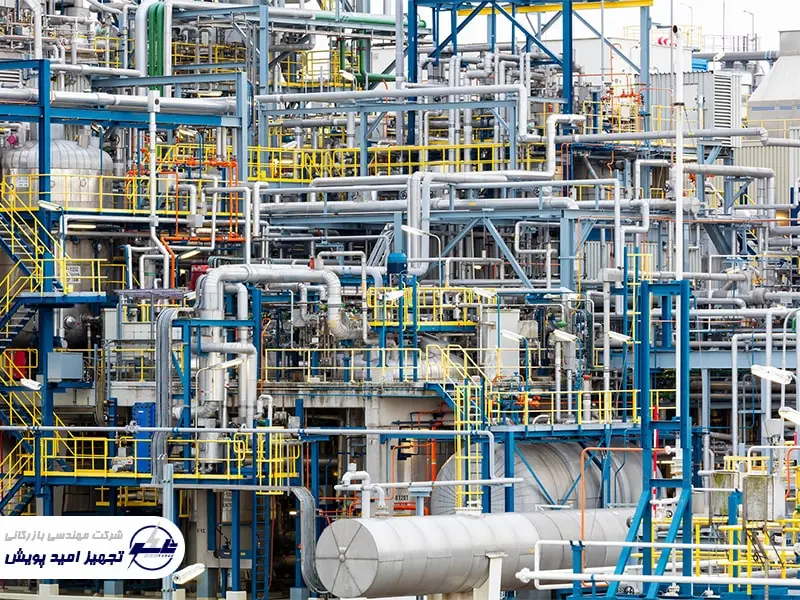| Piping technical terms and its practical concepts
Piping technical terms are suitable for people who want to start their activity in this field as a specialist. Everyone in the field they work in must have enough information about it and know the terms related to it. These terms make the learning base stronger and are useful in better understanding of the material. Also, when doing the work of engineers and colleagues in different fields, by using these terms, they can better talk to each other technically and get their point across.
Piping or industrial piping is used for all jobs that require this type of piping, and anyone who needs industrial piping in their engineering work should know the terms related to it. Stay with us to learn the technical terms of piping.
What is piping?
Piping or industrial piping is called practical. during which, through the pipes, fluids from They transfer from one place to another. These fluids can be liquids like be water, gas and slurry. The simplest example for piping is the water piping of buildings, which is present in all of our homes. In piping engineering, the training and application of points are discussed, by observing them, piping and transferring fluids are done in a correct and principled way.
These points are initially used to analyze the conditions and the location, and by paying attention to them, work instructions are obtained. After that, based on global standards and guidelines and local laws, the piping plan is designed. After that, it’s time to install pipes and connections. They and other equipment are required.
Finally, the correct transfer of fluids through the implemented piping is tested. Like any other engineering work, plumbing also needs proper maintenance so that it does not fail. As a result of observing all the principles of piping engineering and its implementation, the act of transferring fluids from one place to another is done without any significant change in the quality of the material.

Application of piping and its equipment and piping technical terms
Piping is used in any situation where we want to transfer fluids. But its engineering and safety principles are mostly used in refineries and for oil and gas transportation. Since these materials are flammable and their transfer is very dangerous if not carried out properly and with safety precautions, it is necessary for all those who work in the oil and gas industry to be aware of its principles. Know the technical terms of piping.
Some welding terms
Piping engineering is the same as all. Other technical knowledge has terms that learning them to. Its scholars help. To do your job better. and interact more accurately with other colleagues. Following are some of these technical terms. We tell you about piping:
Add joint
In the initial plan designed for piping and welding, the location and number of welds should be determined. Whenever there is a need for a change in this drawing, it may be necessary to add some welds to the pipes. In piping technical terms, these welds that are added later are called Add joints, which are no different from the initial welds in terms of cost.
Delete joint
Another common technical term in piping welding is Delete joint, which is the opposite of the previous term. This means that the changes made in the initial piping drawings during the work will make it necessary to remove some of the welds.
In terms of cost, if this change has happened before the creation of the heat, there will be no problem and no cost will be charged for it. On the other hand, if a survey has been created, and then a request is made to change the map and delete the survey, the survey will be deleted, but the cost must still be paid.
Back weld
In the technical terms of piping, back weld means repairing a weld from inside the pipe. When doing this work, it is necessary to see a defect in the pass, so they use the radiography method to do this check.
In order to do this and reach pass one, you must first cut and stone two other passes so that the repair of pass one can be done. But the better and easier way is for the welder to do this repair from inside the pipe. Of course, don’t forget that doing this depends on proving the existence of a problem in pass one.
Back weld means repairing one pass of the welding head from inside the pipe. It is necessary to do this when a defect is seen in the pass of a weld, for which they use the radiography method. To do this and reach pass one, two other passes must be cut and stoned first so that the repair of pass one can be done. But the better and easier way is for the welder to do this repair from inside the pipe. Of course, don’t forget that doing this depends on proving the existence of a defect in pass one.
Reweld
If a butt has been made and welded, and then under some circumstances it is necessary to cut that butt and readjust and weld, in technical piping terms, you have reweld. This work is usually done due to making certain changes in the piping plan. For example, if the line size changes in the initial drawings, the weld needs to be cut and rewelded.
Sometimes, after the investigations, it becomes clear that the welding done is not of good quality and is not welded properly. Often, the reason for this carelessness is that the welder and the quality control unit do not pay attention to the size of the welds and only consider the quality of the welds. In the next steps, when the size of the welds is checked by the supervisor, reweld may be ordered. To pay for the cost, the cost of doing this work is at least twice as much as welding the ends.

Abbreviations and terms in piping and welding:
-
Anti-dumping (AD)
It is called import duties by a group or commercial producer in a country. These duties are charged when the goods are being sold significantly lower than the market price or even the production price. In general, this phrase indicates a serious threat to similar domestic producers.
-
Alloying Elements
It means composed of different chemical substances which, when combined, provide a stronger substance. Common examples of these materials and alloys are nickel, chromium, vanadium, silicon and copper metal.
-
Annealing
The process that is done to soften steel and change physical components or remove gas pockets is called Annealing.
-
American National Standards (ANSI)
Formerly known as the American Standards Association (ASA). Provides up-to-date information on standards at international and global levels.
-
American Petroleum Institute (API)
This term represents all aspects of the US oil and natural gas industry.
-
Bend Test
It shows that many experiments have been done on the materials to make them formable. Bend the material back and forth repeatedly until physical failure occurs.
-
Bill of Lading
A document used in maritime trade to show the ownership, quantity, condition, and destination of goods and serves as a receipt for them.

Pipe material
The first device that is required in the piping equipment is the pipe. The type of pipes are selected according to the type of material they transport. Pipes are usually made of metal such as aluminum, steel, fiberglass and copper or plastic. In addition, valves and pressure gauges are also used in piping. CAD software can also be used to design piping plans.
Pipe sizing
In addition to the type of pipes, which should be selected according to the purpose of the pipe, one should also be careful when choosing the sizing of the pipes. Because, their size is different according to their efficiency and performance. For example, the pipe size for materials that cause corrosion in the pipe is different from materials that do not damage the pipe.
In addition, some sizes have already been considered only for a series of special materials. Therefore, before choosing the size of the pipes, the characteristics, density and thickness of the pipes should also be analyzed, and the piping engineers should confirm their compatibility and suitability with the selected materials, so that they can be used Used for oil and gas lines. In addition, considering the type of material that flows in the pipe, the speed of the material passing through the pipe and the composition of the material are also important and should be checked before placing the pipe.
Pipe connection methods
The history of pipe connection belongs to the period when humans decided to use pipes to change the water path and direct it in the desired direction. For this, they took the help of materials such as soil and rock, and later made various dams and soil and gradually became familiar with the connection of various types of pipes and piping. Today, different methods are used to connect different types of pipes, which vary according to the type of material. Pipe connection methods are:
-
Mechanical joints
This connection method is used for special pipes, urban sewage and ventilation paths.
-
Flange connections:
These connections are effective for closing all kinds of pipes instead of nuts.
-
Copper wire connectors:
This method includes the use of a pipe and a sealing O-ring.
-
Steel welded joints:
In these connections, fusion welding is used to connect two or more metal pieces.
-
Threaded connections:
In this method, threading machines are used for small pipes, whose diameter is between one-eighth and 2 inches.
If you are interested in reading more about industrial fittings and valves, you can refer to the article about industrial valves and fittings.
